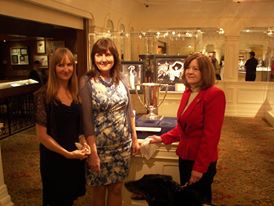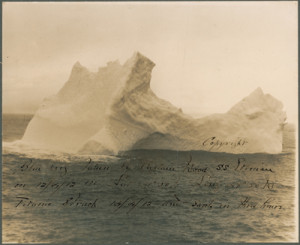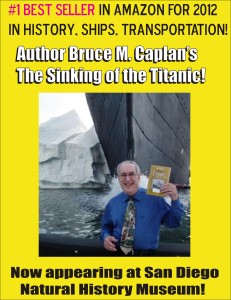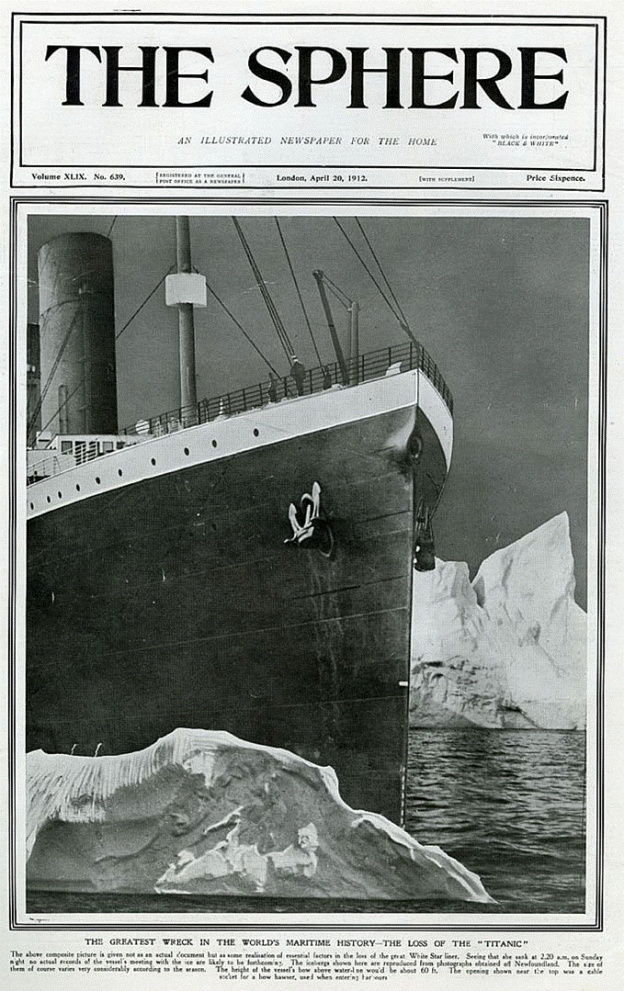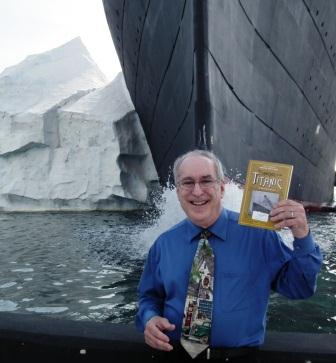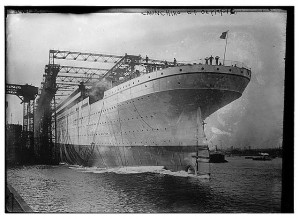
Launching of the RMS Olympic at Belfast, Ireland.
From Bruce M. Caplan:
Testimony at British Enquiry—-Charles Hendrickson (I think this is the real reason the iceberg was able to penetrate the steel!)
Day Five–
5232. Do you remember a fire in a coal bunker on board this boat?
– Yes.
5233. Is it a common occurrence for fires to take place on boats?
– No.
5234. It is not common?
– No.
5235. How long have you been on a White Star boat?
– About five years.
5236. When did you last see a fire in a coal bunker?
– I never saw one before.
5237. It has been suggested that fires in coal bunkers are quite a common occurrence, but you have been five years in the White Star line and have not seen a fire in a coal bunker?
– No.
5238. Did you help to get the coal out?
– Yes.
5239. Did you hear when the fire commenced?
– Yes, I heard it commenced at Belfast.
5240. When did you start getting the coal out?
– The first watch we did from Southampton we started to get it out.
5241. How many days would that be after you left Belfast?
– I do not know when she left Belfast to the day.
5242. It would be two or three days, I suppose?
– I should say so.
5243. Did it take much time to get the fire down?
– It took us right up to the Saturday to get it out.
5244. How long did it take to put the fire itself out?
– The fire was not out much before all the coal was out.
5245. The fire was not extinguished until you got the whole of the coal out?
– No. I finished the bunker out myself, me and three or four men that were there. We worked everything out.
5246. The bulkhead forms part of the bunker – the side?
– Yes, you could see where the bulkhead had been red hot.
5247. You looked at the side after the coal had been taken out?
– Yes.
5248. What condition was it in?
– You could see where it had been red hot; all the paint and everything was off. It was dented a bit.
5249. It was damaged, at any rate?
– Yes, warped.
5250. Was much notice taken of it. Was any attempt made to do anything with it?
– I just brushed it off and got some black oil and rubbed over it.
5251. To give it its ordinary appearance?
[metaslider id=336]
